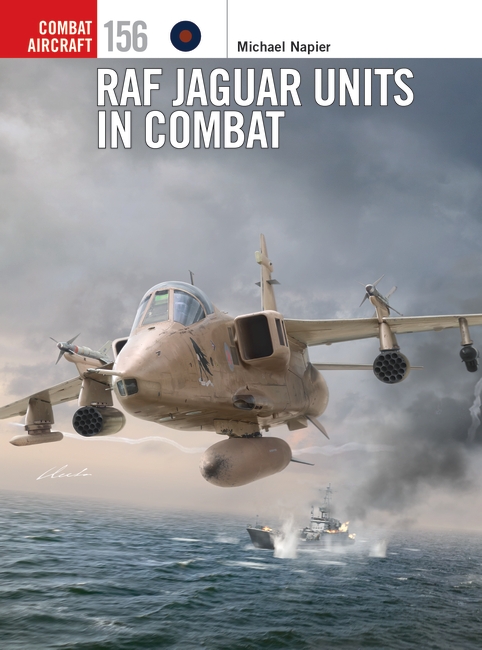
I was delighted to get the opportunity to write the story of the RAF Jaguar units in combat. During my service in the RAF, the Jaguar force was held in high esteem and enjoyed a reputation for great professionalism. That reputation proved to be well founded during the Gulf War and subsequent combat operations over the Balkans. It has given me great pleasure to record the exploits of Jaguar pilots, for which I have researched declassified official documents from the period as well as using first-hand accounts of the action. The book includes many photographs that have not been previously published, as well as 22 colour profiles of representative aircraft from each campaign, beautifully drawn by Janusz Swiatłon.
The Jaguar originated from British and French requirements for a training aircraft in the late 1960s. The result was, instead, a capable strike/ attack aircraft, which formed the backbone of the RAF ground attack force in the late 1970s and early 1980s. From its Cold War peak strength of eight front-line squadrons, by 1990 the Jaguar equipped the three squadrons of the Coltishall Wing, forming the RAF’s mobile force. Throughout its 33 years in RAF service, the Jaguar was periodically updated to ensure that it remained a potent weapons platform, and by time it was withdrawn the aircraft was equipped with numerous state-of-the-art modifications. The book briefly outlines the service history of the Jaguar and traces the various modification programmes, as a background to the operational phases.
When the Kuwait Crisis broke out in 1990, it was the Jaguar force that was dispatched immediately to shore up the defences of Saudi Arabia. Despite training for a low-level war, the Jaguar pilots found themselves flying over Kuwait at medium-level once hostilities commenced. During the conflict, most of the Jaguar combat missions were flown over Kuwait which was at the time the most densely defended airspace in the world. Despite facing stiff defences, the Jaguar force acquitted itself well, successfully attacking targets such as artillery and missile batteries and concentrations of Iraqi armour. Patrols were also flown over the northern Persian Gulf, during which Jaguars engaged Iraqi vessels. By the end of the conflict the Jaguar force had flown 618 combat sorties from Bahrain, for no losses. The first three chapters of the book tell the story of the Jaguar participation in Operation Granby, from the initial deployment to Oman to the final sortie flown over Kuwait.
Soon after the Gulf War, Jaguars were sent to join Coalition forces enforcing the No Fly Zone over northern Iraq. Operating from Incirlik in Turkey, they provided tactical reconnaissance for the Coalition, locating Iraqi SAMs and fighter aircraft and monitoring Iraqi army deployments. The early sorties were flown at low-level, but when the Jaguar returned to Iraq in the late 1990s, after having operated over the Balkans, the task had changed to medium-level in response to the ground threats beneath the No Fly Zone.
After serving in the Middle East until 1993, the Jaguar force saw action over the Balkans. Firstly, after supporting the UN ground forces in Bosnia Herzegovina from summer of 1993, Jaguars were called in to participate in a NATO airstrike on the Serbian airbase at Udbina in the following year. Then, secondly, TIALD-equipped Jaguars provided laser target marking for Harrier GR7s during the brief but vigorous NATO campaign against the Bosnian Serb Army in the late summer of 1995. Both of these campaigns are described in detail in the book. Subsequently, Jaguars continued to take their turn patrolling the No Fly Zones over the Balkans and northern Iraq, until the aircraft was prematurely withdrawn from service in 2007.
You can get a copy of RAF Jaguar Units in Combat here.

Comments
You must be logged in to comment on this post. Click here to log in.
Submit your comment